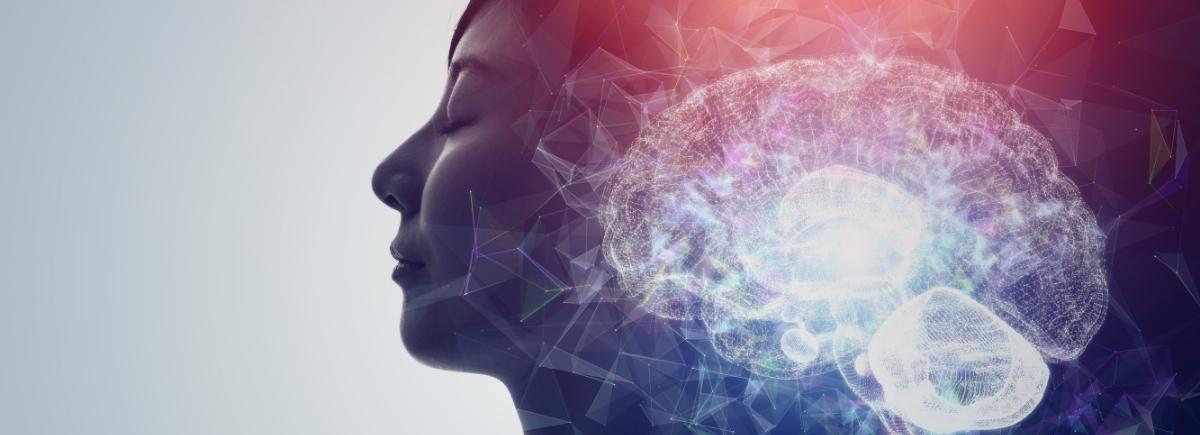Breaking Down The Autonomic Nervous System
In Psychophysiology 101 Part I, we looked at the body’s innate desire for stability and consistency (i.e., homeostasis) and our ability to adapt during significant change/stress (i.e., allostasis). When our perceived resources/abilities to cope with stress are outweighed by our experience of stress, we enter into a state that can produce immense physiological harm (i.e., allostatic load). Interestingly enough, there is a lot that is occurring in the background. Think of it like a movie production. When you watch a movie, you are only viewing the end product. You do not see all of the takes, production, editing, set-up, etc. There is a lot that goes into this process. Stress and stress outcomes work very similarly. The end result may be the internalized or externalized stress response that we might refer to as allostatic load or stress experience, but how did we get there? This is where we need to get a little more granular in our understanding. We do not need to get as granular as cellular functioning or energy production and expenditure at the mitochondrial level, but it does make sense to talk about our nervous system–in particular, our Autonomic Nervous System.
The Autonomic Nervous System (ANS)
The Autonomic Nervous System (ANS) is a division of the Peripheral Nervous System (PNS) and consists of three branches: Sympathetic, Parasympathetic, and Enteric Nervous Systems. The autonomic nervous system is directly connected to the Central Nervous System (CNS; brain and spinal cord) and works as a highway for communication. The primary role of the ANS is to regulate and control the contraction of both cardiac and smooth muscles and glands. It also sends direct sensory information to the CNS. It was previously thought that the autonomic nervous system was autonomic (“automatic”) and was not under the influence of volition of control of the individual. While it is true that the ANS operates autonomically, research has demonstrated that we indeed have direct control over many aspects of its operation. That’s a really good thing! In fact, if this were not true, Hanu Health would probably not exist and you would not be reading this article.

While the ANS consists of three branches, we will place emphasis primarily on the Sympathetic and Parasympathetic Nervous Systems. I will leave the Enteric Nervous System for a different discussion; though, it is quite relevant to this discussion. Turns out, if we write 10-page articles, people don’t read them. Many people get confused with the notion of “sympathetic” vs. “parasympathetic.” Does the sympathetic division help us to provide more sympathy? Short answer, no. The word sympathetic is derived from the concept of sympathy but refers more to the “connection between parts.” Indeed, sympathetic is translated as “to feel” (-path) and “together” (sym-); parasympathetic is translated as “to feel” (-path), “together” (-sym), and “beside” or “adjacent to” (para-). People also confuse the sympathetic nervous system as “bad” or our “enemy” and the parasympathetic nervous system as always our “friend” or “ally.” Not true…at all. There will actually be an entire article on the myths of the autonomic nervous system.
The ANS branches (both sympathetic and parasympathetic) are responsible for innervating (supplying an organ with nerves) almost every major organ within the body. Hence, why we derive the words, to feel together—it is a broad system of connection. The most dense nerve connections occur in the heart, lungs, and gut. Overall, there are 37 miles worth of nerves that are found in the peripheral nervous system and subsequently connected throughout the entire ANS. Let’s talk a little bit about each branch of the autonomic nervous system.

The Sympathetic Nervous System (SNS)
The Sympathetic Nervous System (SNS) is probably the most misunderstood branch of the ANS, especially in how it relates to its role within the human stress response. More conventionally, the SNS has been thought of as the “fight or flight” branch. While this is not entirely incorrect, it paints the misconception that when someone is stressed that the SNS is fully activated—or that it is always activated. Again, not entirely untrue, but also not entirely true. It is correct that when we encounter a significant life stressor or event, especially an acute or transient event, the SNS will be activated. An example of this would be a car accident. During extremely heightened stress events, this is where you see the activation of the SNS. Think of the SNS as being the gas pedal—while the PNS is the brake. It is a bit of a misconception that everyday stressors, such as work, finances, traffic, relationships, result in a mass activation of the SNS. Indeed, during these types of everyday stressors (which is not good when they compound, by the way–see the “what is stress” articles), we actually see significantly less activation of the SNS and more inactivation of the parasympathetic nervous system (PNS). More about this in the upcoming section. Even still, the SNS branch of the ANS is all about expending energy. In other words, it readies our resources for utilization.

When we encounter a significant threat, the SNS will activate certain areas of the body and brain to better ensure our survival. As I have stated before, this is a good thing. Let’s not demonize the SNS or the human stress response. It is actually there to help ensure you continue with your life and pass down your amazing genes. How does the SNS ready us for action and expend energy? It is responsible for dilating the pupils, increasing heart rate for increased oxygen and nutrient delivery, it dilates our airways, increases the rate of glucagon to glucose (increased cellular fuel), stimulates our adrenal glands (more adrenaline secretion), and shuts down digestion (no need to digest food, we have work to do—or a mountain lion to escape). All of this is our body’s way of readying us for action.

The Parasympathetic Nervous System (PNS)
Now it is time to talk rest, digest, and relax. I am talking about the Parasympathetic Nervous System (PNS). Just as there are misconceptions with the SNS, there are also with the PNS. This division of the ANS is responsible for the conservation of energy. If there is an activity that increases the body’s energy reserve, the PNS is responsible for regulating it. From a physiological perspective, this includes enhancing peripheral and gastric blood flow (for digestion), enhancing salivation, constricting the pupils, slowing heart rate, constricting the airways, and stimulating the gallbladder. Most of the nerve innervations and cell bodies of the PNS are found in the sacral region of the spinal cord and at the base of the hindbrain. This branch of the nervous system is primarily dominant and activated during times of relaxation. Most notably, it has been found that when someone encounters a space that is considered safe from threat, they have large-scale activation of the parasympathetic nervous system.
Most people tend to have less significant SNS activation and more PNS withdrawal during times of stress. The PNS is mediated by the 10th cranial nerve, the Vagus Nerve (see Vagus Nerve Article—coming later). The vagus nerve is responsible for the detection of inflammation and uses neurotransmitters, primarily norepinephrine and acetylcholine, to help reduce the impact of inflammation. Research has demonstrated
that you can actually activate this system to dampen inflammation through the practice of resonance frequency training – which is found within the Hanu app. The more we stimulate the vagus nerve, the more we inherently activate the PNS and significantly enhance resiliency
to stress.
The Interconnectedness of the SNS and PNS Branches
A common misconception is that the SNS and PNS act like a see-saw and “balance” each other out. This is simply not true. What is true is that there are indeed antagonistic features, but they also can be quite complementary and even act independently. One example of how they “compete,” also known as accentuated antagonism, is in heart rate. Engaging the PNS can actually slow the heart rate down. Some research has demonstrated that you can lower your HR as low as 20-30 beats per minute and even stop it via the PNS! Woah!
While many of the actions of the PNS and SNS are indeed antagonistic (competing), they also can complement each other. Think about how an athlete may need to engage both branches of the ANS during a sporting event for enhanced performance. From a physiological perspective, have you ever noticed that when you are stressed your saliva can become quite thick? And, when you are relaxed, your salvia can become thin and watery? These are complementary actions. All-in-all, the relationship between the SNS and PNS is dynamic in nature. This is not a see-saw and one does not always affect the other. Just because you are engaging the PNS does not mean that you are decreasing or increasing SNS activity.

Practical Take-Aways
Ok, this article is getting long. Crazy thing is, I could write about this and get granular for another 500 pages. But, you may want to know what you do with this. Here are a couple of things to consider:
- It is always great to have a good understanding of your psychophysiology, but what is most important is knowing:
A) Am I stressed?
B) How is stress manifesting?
C) What is causing (or keeps causing) me to be stressed?
D) Are my perceived capabilities of handling stress being overly taxed? - You can indeed measure the changes in your Sympathetic and Parasympathetic Nervous system via Hanu HRV analyses (these are factored into the Stress Resiliency Score). These are done by:
A) Examining the Very Low-Frequency Band (VLF power)
i. Significant increases in this band, compared to your baseline are indicative of alpha sympathetic activity
B) Examining the High-Frequency Band (HF power)
i. Significant increases in this band, compared to your baseline are indicative of enhanced parasympathetic activity.
C) Examining the RMSSD value
i. Significant increases in this band, compared to your baseline are indicative of enhanced parasympathetic activity. - Train, train, train.
A) HRV training/biofeedback can be a wonderful way to reduce inflammation (noted above) and enhance resiliency to stress by engaging the parasympathetic nervous system. Hanu has got your back!



